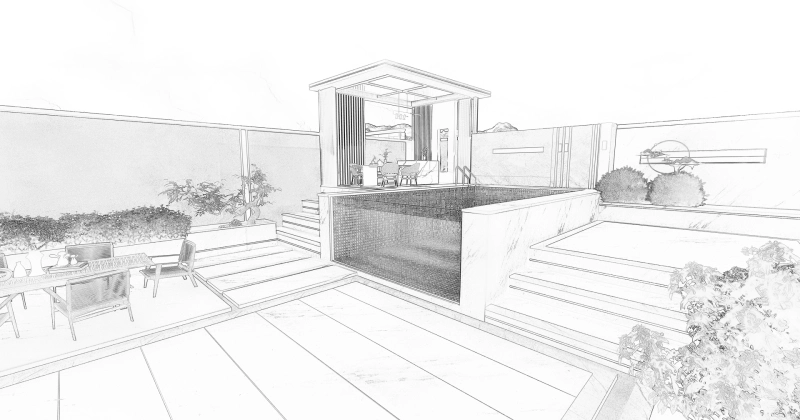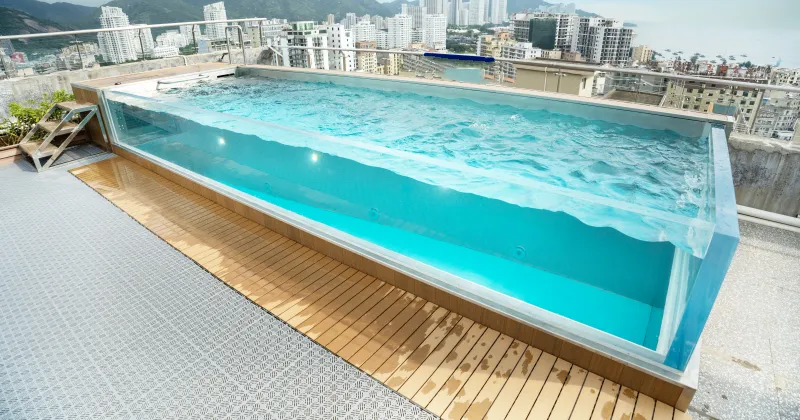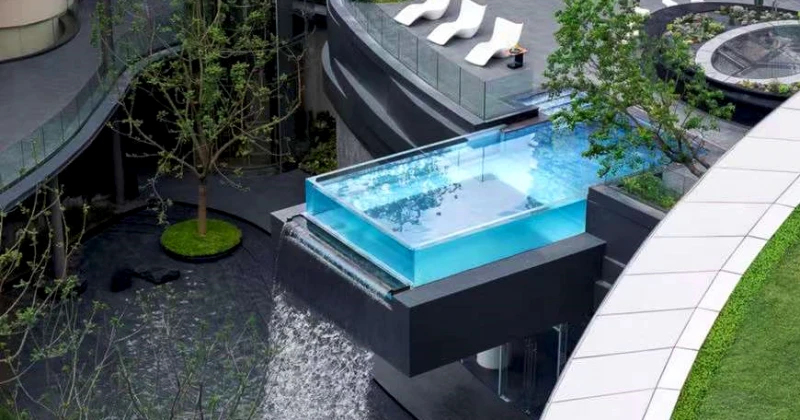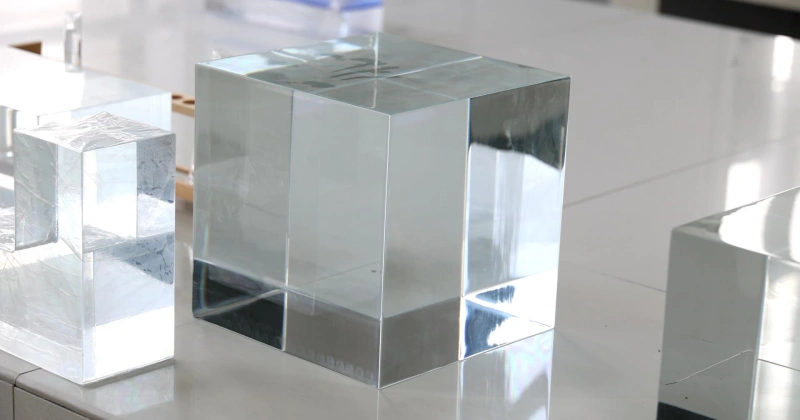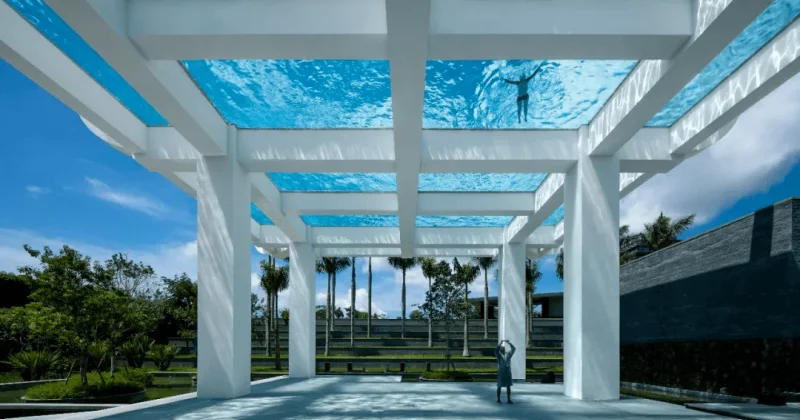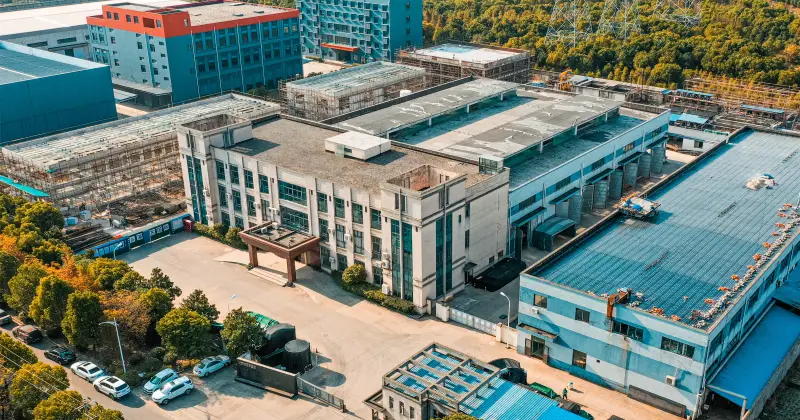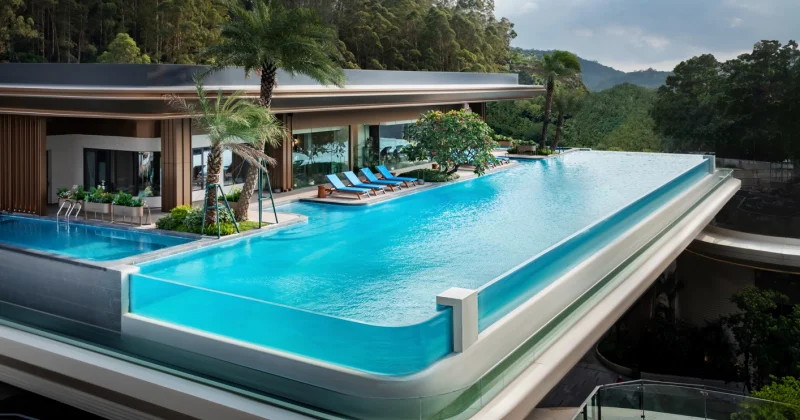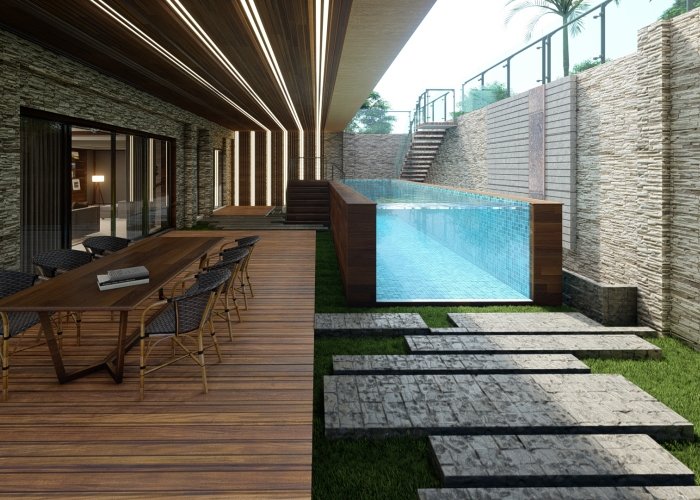
Thinking of Installing a Plexiglass Pool? Here’s What You Should Know
Have you ever dreamt of a home with a swimming pool in the backyard? If the answer is yes, then you are not alone; almost all of us have had such dreams at some time. Well, you can live your dream now, or even take it one step further with the see-through nature of Plexiglass pools. You can swim in these glass pools without worrying that they may crack.
While the design and installation of Plexiglass pools are much easier compared to traditional pools, you still need to keep some things in mind to make the process even smoother. Join us as we talk about the things you need to know before installing a Plexiglass pool, from pre-installation permits to routine inspections and everything in between.
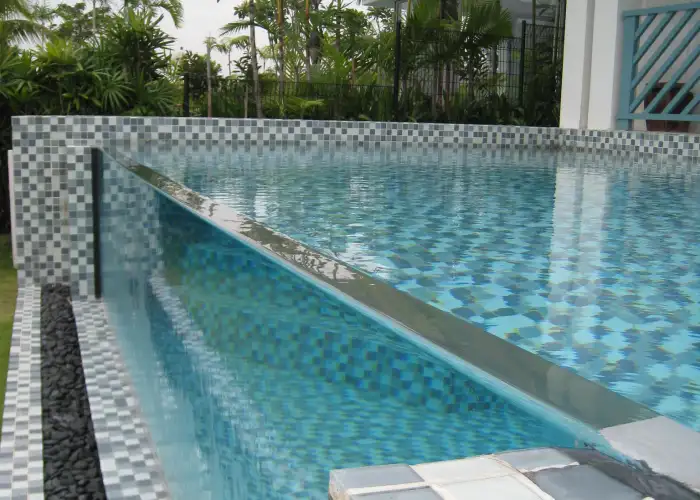
Why choose Plexiglass pools?
But why should you choose Plexiglass (acrylic) pools? While you have plenty of options to choose from, like traditional concrete pools and glass pools, choosing Plexiglass for your pools offers plenty of prominent features:
Lighter than glass
Plexiglass pools are surprisingly lighter compared to glass or any other see-through material. They weigh almost 50% less compared to a glass panel of the same size and thickness. This lighter weight makes Plexiglass the top choice for anyone looking for a transparent pool.
Excellent transparency
Plexiglass pools are so transparent that they are sometimes known as acrylic glass pools. These pools transmit up to 92% light, while glass can only transmit 88-89%, making them technically more transparent than the glass.
Durable
Acrylic (Plexiglass) pools are not just beautiful; they are also durable. With 10x impact resistance compared to glass, they are much better at handling water pressure and cracks.
Easy to handle
Acrylic sheets are lighter, which makes them easier to handle during the installation process. They weigh half as much as a glass panel and have excellent moldability, which is why they can be customized to literally any design.
Let’s now talk about the most important things you need to know before installing a Plexiglass pool.

Pre-installation considerations
Here are some instructions you need to keep in mind before you begin the acrylic pool installation.
Structural load and pressure ratings
The pool should be able to bear both static and dynamic water pressure, without cracking or shattering. This is important for the long-term structural integrity of the pool. Plexiglass pools are known for higher pressure ratings and for maintaining their structure under considerable load.
Permits
Based on the area to live in, you may need permits to install the pool. Arrange building permits, structural engineering approvals, and geotechnical or soil assessment reports for partially or completely in-ground pools (where excavation is required).
In the case of above-ground pools (with no excavation requirements), you do not need stringent approvals. Only building or safety approvals are needed. Also, arrange an electrical permit if you want to add lighting to your see-through pool.
Site preparation (Excavation required or not?)
Plexiglass pools come in different configurations: either fully or partially in-ground, or fully above-ground. In the first two types, you need extensive site prep, including excavation, plumbing, and electrical connections. While in the case of fully above-ground pools, you just need to prepare the base.
Know your pool configuration well before the installation, as this will help you arrange excavation or permits accordingly.
Lighting requirements
If you want to integrate embedded lighting into your pool, then you need to plan their ports before pouring concrete or installing panels. Ask the installer to use proper cutting templates, corrosion-resistant treatments, and ducting for safe, code-compliant electrical runs to avoid any issues down the road.
Weight of the pool and logistic costs
You might not give logistics a second thought, but this is an important step in the installation. A custom acrylic panel measuring 10 m × 1.2 m × 10 cm can weigh around 1,428 kg, so professional logistic management is crucial.
Further, ask your pool manufacturer who will pay the transit fee, and be very straightforward about it. Not setting this straight would mean additional freight costs, which could go up to 1000s of dollars.
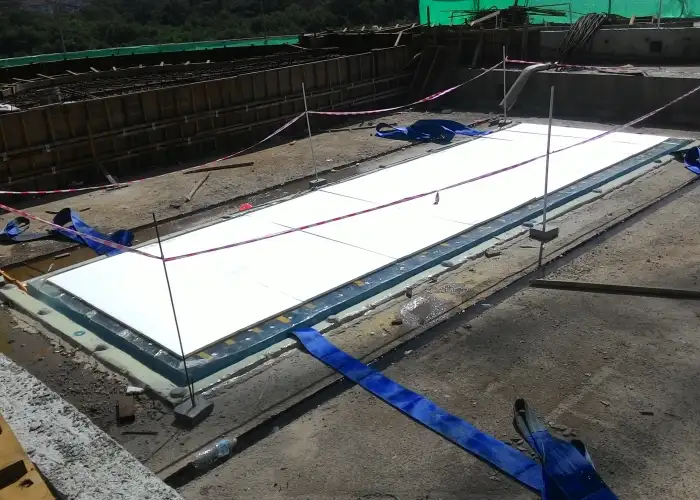
During installation considerations
Here comes the big day, your Plexiglass pool has arrived at your location. While professional installers should handle this perfectly well, there is some input needed from your end, too.
Ensure the following for an efficient installation:
Structural support and proper framing
Although acrylic panels are robust in nature, they must be mounted within a reinforced concrete or steel frame to withstand hydrostatic pressure, material creep, and deflection. The support frame can either be three-sided or four-sided, based on the pool configuration. The framing has to be sized according to panel thickness, water depth, and support type.
Panels supported on three sides (like vanishing-edge walls) require deeper slots, typically at least three times the panel thickness, filled with non-shrink grout. This bonds the acrylic and concrete as one unit.
Accurate panel thickness and sizing
Accurately measure the thickness of the acrylic panel to ensure proper sizing. Panel thickness is calculated based on several factors, like:
Water column height
Opening width
Support type (three-sided or four-sided)
Three-sided supports need a thicker panel width to support the structure.
Sealing and waterproofing
Acrylic pool installation is much more than just bonding the panels together. These panels should form one complete unit that is strong enough to handle water pressure at all levels. The installation should include proper waterproofing and gaskets to accommodate the expansion and contraction of acrylic against the concrete.
A 15 mm EPDM gasket and an extrudable silicone sealant are needed for optimal waterproofing.
Load testing before filling
Once waterproofing and sealing are done, the next process is to pressure-test the sealed joints. This step ensures the overall structural compliance of the pool before filling it up. Missing this step can lead to potential leaks and structural damage to your pool.

Post-installation considerations
Plexiglass pools are extremely low-maintenance pools; just do some routine maintenance, and the pool should be good for the next swim.
Regular cleaning and maintenance
Use soft brushes to remove leaves and debris from the pool surface. Acrylic pools do not do well with harsh chemicals, so avoid them at all costs. Only use mild, non-abrasive cleaners to avoid any damage to the acrylic surface.
Chemical balance
Like any other pool in your house, maintain the chemical balance of the water inside your Plexiglass pool. Maintain pH, chlorine, and other parameters that need regular monitoring to protect acrylic seals and surfaces over time.
Some of the parameters to maintain are:
pH: 7.2-7.8
Free Chlorine: 1.0-3.0 ppm
Total alkalinity: 80-120 ppm
Maintain these in the required range to keep your pool ready for the swim.
Seal and joint inspection
Check the expansion joints (around coping or deck areas) for leaks every once in a while, and re-caulk them every 5 years. If you see any signs of leakage, empty the pool immediately and call the pool installer to fix this.
Monitoring thermal expansion
Acrylic panels may expand or contract by up to 2 inches or more, based on their panel size and temperature. Rebates and joints are installed to manage this expansion and contraction. Improperly designed rebates or rigid joints can lead to cracks, seal failure, or misalignment.
While the acrylic pools are easier to install and maintain, following these guidelines will make the installation a breeze.
5 mistakes to avoid during your Plexiglass pool installation
Plexiglass pools are different from traditional pools, so they need specialized installation techniques. Here are the 5 most common mistakes that most homeowners make regarding acrylic pool installation.
1. Using an acrylic pool in unfavorable situations
Acrylic pools are very popular due to their glass-like look and even better properties. But let’s be honest: they cannot be used everywhere. Acrylic pools or windows come at a premium cost, so they must be used smartly to reflect that value.
Installing a pool in an abandoned backyard or in areas with severe temperature fluctuations can ruin the pool entirely. An average-sized Plexiglass pool can cost you $40,000 to $50,000, so install it somewhere that is worthy of it.
2. Ignoring thermal expansion
If you or your installers miss this step, it will not end well for you and your pool. Keep significant margins for thermal expansion, based on your region. An acrylic panel can expand or contract up to 2 inches, and when this is not accounted for, it will ruin the structure of the pool completely.
3. Not maintaining properly
Acrylic pools are low-maintenance pools. All you need is to remove leaves and debris from the pool surface or inspect for leaks, especially near the joints. However, when neglected for too long, the pool surface can begin to fade or crack.
4. Not arranging permits on time
Plexiglass pools are different from traditional pools, but they are pools nevertheless. You would need all the necessary permits for plexiglass pools that are needed for any other pool. So, arrange permits well before the day of installation to avoid any surprises.
5. Buying the cheapest option
It's tempting to buy the cheapest option. But, control your frugal nature in case of a Plexiglass pool, because they are a one-time investment. Choosing the cheapest option may sound like a good deal in the beginning, but a compromised pool can drain your pocket in replacement and maintenance costs.
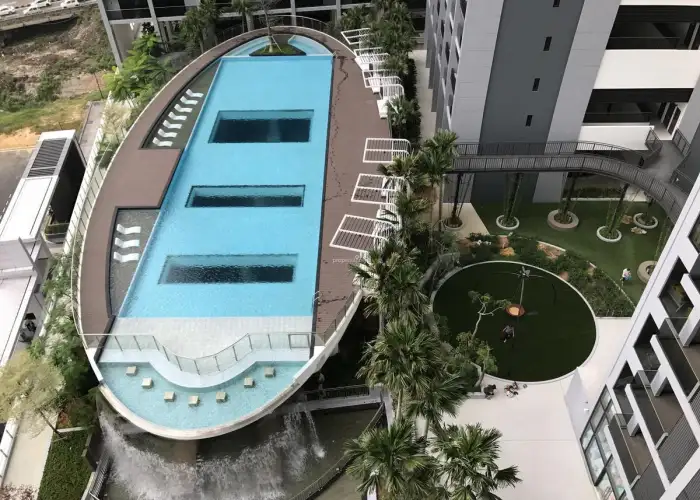
Conclusion
Installing a Plexiglass pool is an excellent investment that pays back in the shape of fun time and increased property value. However, a pool is as good as it is installed. So, make sure you know the things outlined in this article and avoid the common mistakes homeowners make.
If you are looking for an acrylic pool to have fun time with your kids, and boost your property’s value, then the H-series by Aupool is a great option. With no major construction and a simple ground prep, this pool is an excellent choice for people who want a quiet and quick pool installation.






